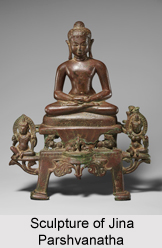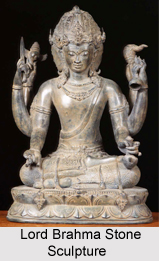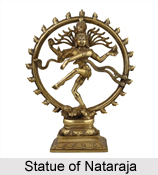 Style of South Indian Sculpture over years has undergone numerous transformations owing to the different patrons engaged in sculpturing. Both stone and bronze sculptures are prevalent in south India.
Style of South Indian Sculpture over years has undergone numerous transformations owing to the different patrons engaged in sculpturing. Both stone and bronze sculptures are prevalent in south India.
Different cultures of south India including Hinduism, Buddhism and Jainism, since ancient times, have embraced the art of sculpturing. Stone sculptures of south India mostly embellish the temple walls of different religions whereas bronze sculptures were mainly for processional images during special occasions. Different varieties of granites were used for stone sculpture. Mostly the bronze sculptures exhibit round and well finished modelling whereas those of stone have deep relief. Apart from these Iyyenar statues and horses are also popular sculptures in the villages of south India. The art has also found expression through terracotta, copper, brass, glass and white marble sculptures.
Patrons of South Indian Sculpture
Chola dynasty was the major power in south India during tenth to fourteenth century. They greatly encouraged this art and had constructed several Hindu temples that showcase the most magnificent sculptures of the country. After the decline of Chola dynasty, south India was ruled by Vijayanagar Empire. The rulers of this empire were also great patrons of sculpture art. During their reign they created a number of spectacular temples, massive gateways and beautiful forts which stand as testaments of the fine art of sculpture. Sculptural remains of Vijayanagar dynasty can also be witnessed in Hampi which, in addition to stone, also houses relics of bronze sculpture. Historical facts however suggest that the art of sculpture reached its zenith during the Pallava dynasty. Satavahanas and Rashtrakutas were also great patrons of this art and sculptures from this era have also gained huge acclamations.
Hindu Sculptures of South India
Hindu sculpture of south India is greatly dominated by Hindu deities. Images of Lord Brahma are very common in this style of sculpturing. The constant presence of different sculptures of Brahma can be identified on temple walls of south India. The earliest images of Lord Brahma can be traced in the stone sculptures of Chola dynasty. These sculptures are exemplary of graceful and proportionate idols, carved with deep reliefs. It is said that the elegance of the sculptures renders them a princely visage rather a plump Brahmin. Images of Lord Vishnu were also an extremely common feature of south Indian sculpture. Lord Vishnu has been depicted in different forms. Bronze images of Lord Vishnu were also crafted during Vijayanagar period. The most famous avatars of Vishnu that are evident in sculptures of this region, is Lord Krishna. From the crawling figure to classical dance form, Krishna has been depicted through this art in different forms. Another popular figurine that can be observed is that of Lord Shiva. A collection of Shaiva themes are common. Classic Nataraja casts in bronze are amongst the most cherished sculptures of south India. Bronze sculpture also displays marriage icons of Shiva and Uma. The elegant and intricate sculpturing had conferred immense divinity to them.
Buddhist and Jain Sculptures of South India
A number of sculptures in south India represent Buddhist and Jain beliefs and have been carved in unique styles. The sculptures are also the portrayal of moral teachers who have earned a divine status in the religion owing to their devotion. Depiction of Buddha Sakyamuni, who played a key role in the foundation of Buddhism, is also common. Jina Parshvanatha, who was among the twenty four recognized teachers of Jains, has also been prevalently represented through these sculptures. Both stone and bronze sculptures portray these images. Buddha sculptures are mostly found in Nagappattinam where Lord Buddha has been represented in varied poses. Being a popular belief of south India, portrayals of different aspects of Jainism through sculpturing prevails in the states like Tamil Nadu and Karnataka.
Both stone and bronze sculptures portray these images. Buddha sculptures are mostly found in Nagappattinam where Lord Buddha has been represented in varied poses. Being a popular belief of south India, portrayals of different aspects of Jainism through sculpturing prevails in the states like Tamil Nadu and Karnataka.
The study of Style of South Indian Sculpture unfolds fascinating and unique styles. Owing to the encouragement of the rulers of south India, a number of deft artisans had emerged in this region, who have left numerous evidences of their brilliant craftsmanship. The sculptures beautifully narrate the religious and cultural history of south India. Many of the sculptures have been well preserved till date as relics of past. However, the mastery of art can also be observed in the remains of the sculptures which have ruined over time. Keen observation can furnish stark differences in the styles of sculpture built during different eras.



